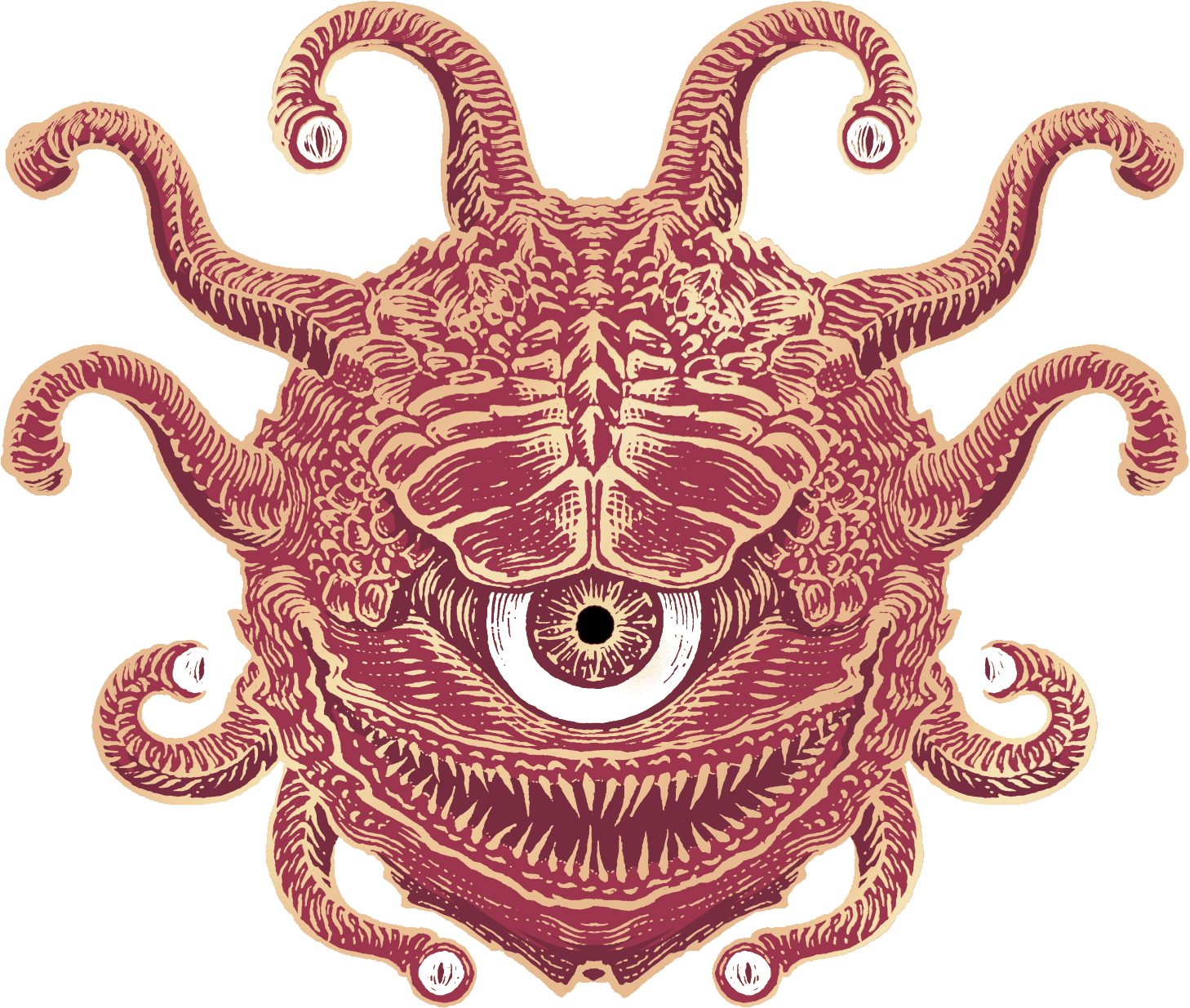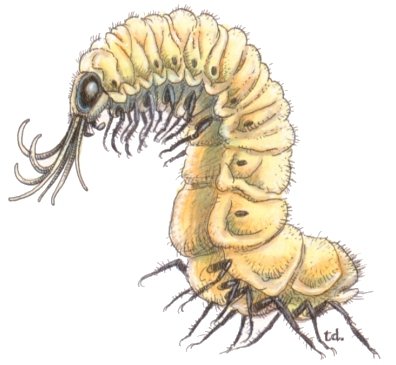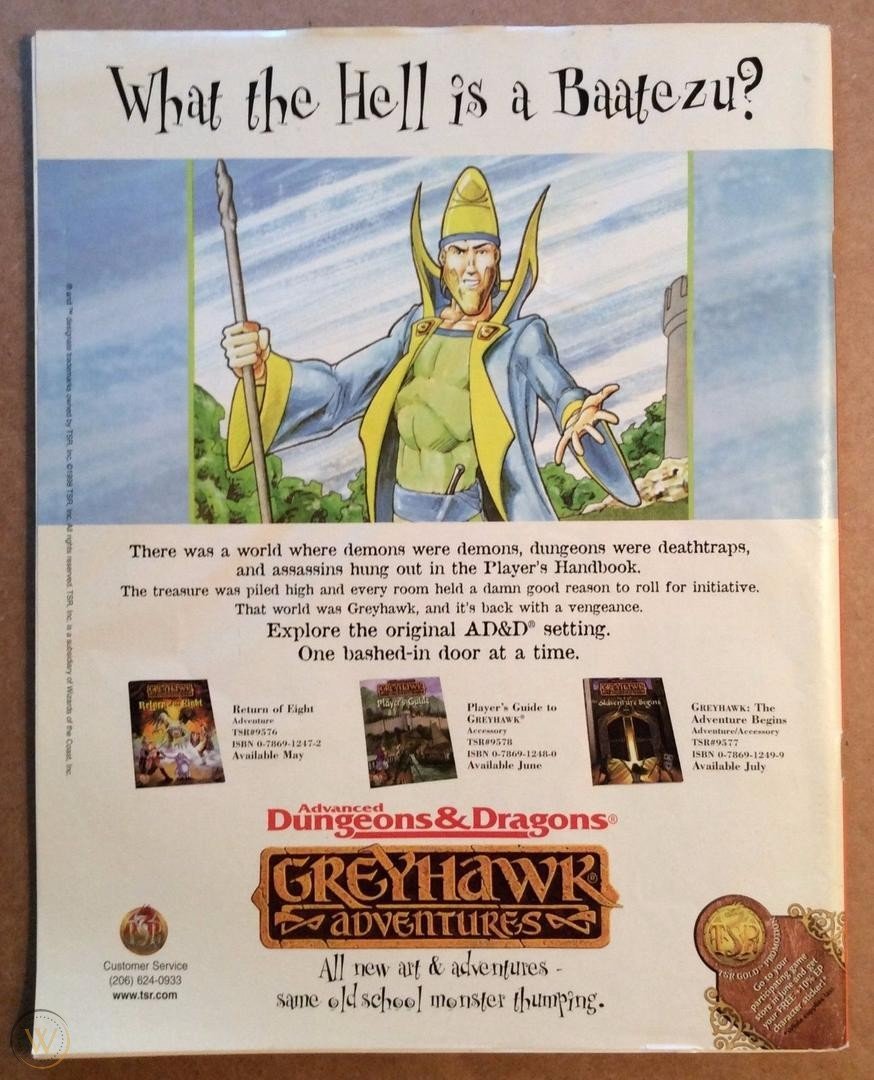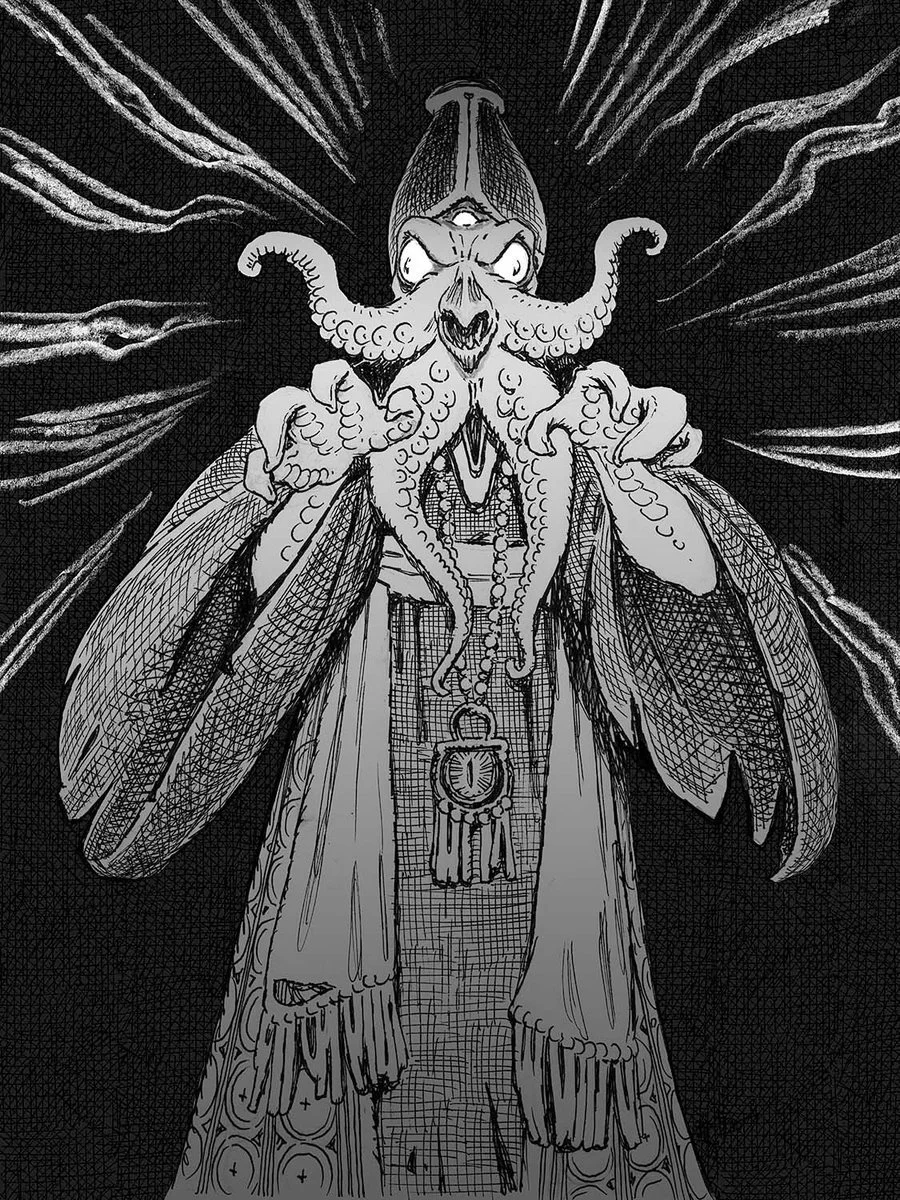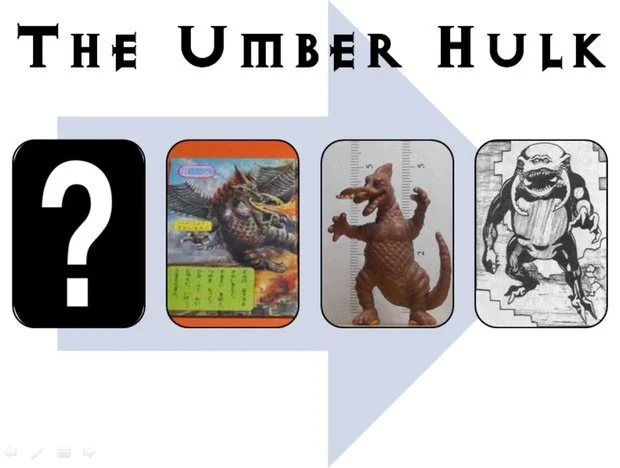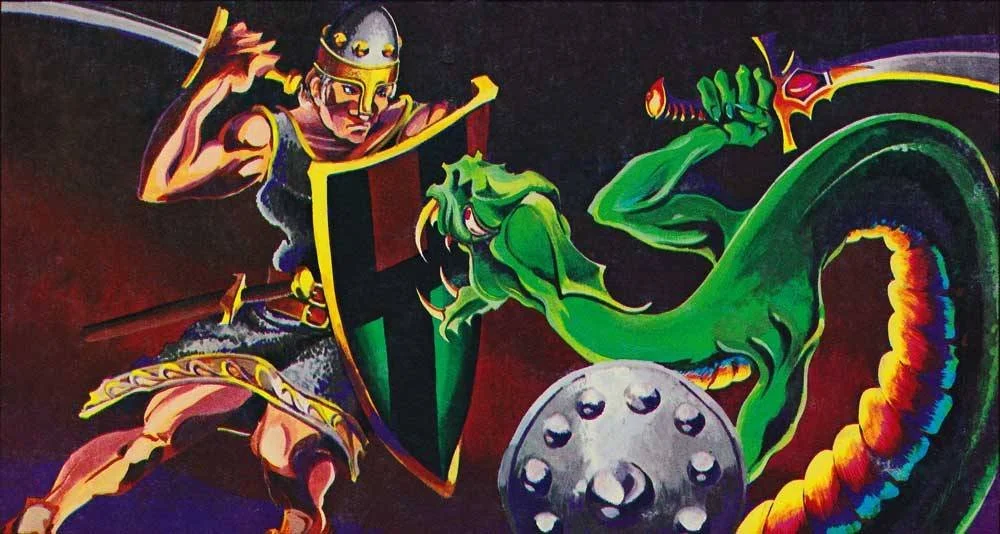Here Be No Product Identity Monsters
You don’t need anyone’s permission to write an adventure. You’ve probably been creating adventures, not always written, your entire life. But what about if you wanted to write an adventure for your favorite roleplaying game? Again, as long as you aren’t ripping someone else’s text directly, you’re pretty much in the clear. But don’t take my word for it; this isn’t legal advice. For that, just turn to my colleague, Ben Milton of Questing Beast whose latest video explains that “You don't need the OGL to publish DnD books (and you never did)”. For more on this topic, you might be interested in this post against the OGL 1.1 from Bat in the Attic. However, I am not concerned with what license the official D&D uses, because I don’t need it. Homemade D&D tastes better.
What about using trademarked monsters from Dungeons & Dragons? There are some great monsters locked away in that vault, but it is easy enough to crack. I’m not even nearly the first person to think of writing a blog post listing alternative names. The answer is that while Wizards of the Coast (who owns D&D and its associated intellectual properties) owns the “Beholder” but not the mere concept of a floating eyeball monster. Even if you aren’t playing D&D proper, these type of monsters have become as much of the lingua franca of fantasy roleplaying as goblins or dragons are. I’m here to help you refer to them in your published adventures just as easily as you might refer to a goblin. (I am also going to rate these monsters on a 1 to 5 scale like I did the Deck of Many Things).
“Beholder” ★★★★★
The Beholder is D&D’s Mickey Mouse. It is iconic, strange and unlike the elves and dragons, it isn’t drawn from your typical folklore or fantasy base. It is dangerous, memorable and can be the centerpiece of an adventure. It also has a pretty good name, unlike most of the others in this list. Some others have named this creature the Cacodemon, Eyebeast, Eye King, Eye of Terror, Evil Eye, Sphere of Many Eyes, Glaring Tyrant, Ocular Tyrant, Eye of Doom (the original name from Terry Kuntz) Ogler… but I prefer the name Panoptikhan. It is certainly a bit more conceptual than “beholder,” but it is a nice combination of the panopticon (a building where a single jailor can watch all of the prisoners simultaneously, which also has been used as a philosophical metaphor by Foucault and others, its name derived from the Greek word for “all seeing”) and khan, a Turko-Mongol title for a ruler. So a panoptikhan is a good portmanteau for a giant, tyrannical, floating eyeball covered in eyestalks.
“Gauth” ★☆☆☆☆
If you are tempted to use a “gauth” in your game, just use a beholder but make it weaker or whatever. I wouldn’t even call a gauth a gauth if I were writing an official Wizards of the Coast adventure. The name is also terrible, just nonsense that is kind of awkward to say at the table (the Forgotten Realms specialty). If you want a beholder that isn’t a beholder, use something interesting like the Eavesdropper, a beholder that is all ears instead of eyes. The only reason I could see using a Gauth is that if I wanted to include a beholder that was also a country singer. In which case, I’d name it “Gauth Brooks.” Anyway, if for some reason you need a generic name for this actual abomination and refuse to just use whatever name you’re using for beholders, you may call it a Garth. It makes just as much sense as the original name.
“Carrion Crawler” ★★★★☆
Creepy crawlies that are bigger than a human make good monsters. A stinking, giant centipede with sharp teeth and tentacles is honestly just as scary as a dragon. I simply would lay down and die if I encountered either one. I am docking this one a star because Carrion Crawler isn’t even the best name for the creature; that honor goes to the Carcass Crawler, which is what Old-School Essentials calls them. Other contenders are the carcass scavenger, corpse creeper, bonesucker, catcher-in-filth, giant rot grub, scavenger worm, slime crawler. My own offering is Megalopede, combining both the words for megalodon (a giant, prehistoric shark whose name means “big teeth”) and centipede. It doesn’t do as much to emphasize what they eat, but does communicate the headline: this giant bug will bite you.
“Tanar’ri” and “Baatezu” ★★★☆☆
This ad is the “We’re saying Merry Christmas again, folks” except for D&D-likers.
These entries are interesting historical artifacts in the game. TSR met the demands of the howling public during the Satanic Panic of the 1980s by renaming demons as “Tanar’ri” and devils as “Baatezu”. This move was satisfactory to all parties involved and ended the Satanic Panic forever, and there was never a moral panic ever again. Then when 3rd edition of D&D came out, the new owner of the D&D brand re-satanized the game and just started saying devil and demon again. So I’m not sure why these even are Product Identity monsters as Wizards of the Coast doesn’t make much use of them. But as a name, I like Tanar’ri! It sounds a bit like Tartarus (a bad neighborhood in Hades) though I could find no confirmation of the etymology. Baatezu is even more fun to say (I like the -ezu suffiix) and perhaps was chosen in reference to Baal, a king of Hell. I like the dual names though, the idea that common folk may call them demons or devils, but the scientific names that learned wizards use are “tanar’ri” and “baatezu”. It is a slight improvement over just vanilla demons and devils. But for our stated purposes, these are the easiest pieces of intellectual property to ignore. Just do the same thing the actual owners of the IP do and just say Demon and Devil.
“Displacer Beast” ★★★★★
I run displacer beasts incorrectly. I like for them to talk, based on the demon cat from Adventure Time, which is itself an obvious knock-off displacer beast. But it is such an immediately great monster—a teleporting puma with tentacles on its back. It is just the right level of weird that makes you want to put it somewhere in your game right away. And like all of D&D’s best ideas, it is ripped off from somewhere else; this time it is the Coeurl from the short story Black Destroyer by A.E. van Vogt. Other names for the beast have been the Phase Tiger, Phase Cat, Displacer, Distortion Stalker, Shadow Stalker and Space Beagle (a dog variant that is a more direct reference to A.E. van Vogt’s novel, The Voyage of the Space Beagle). If none of the above names work, Dislocation Beast is a suitable replacement. I like keeping the beast because it isn’t just a dislocating puma, cat or tiger, the tentacles definitely elevate it to a beast.
“Githyanki” ★★★★☆
These are some cool freaks. I agree with my colleague, Mars of the Save Vs Worm blog, that “the mutated evolved descendants of humans bound in mind flayer slavery for generations, having rebelled from the mind flayers using developed psychic abilities, now dwelling in a higher dimension, worshiping an undying lich-queen, doing expeditions into the material world, and having special agreements with red dragons that let them ride them around” is just so much rich detail, and that these freaks are knocked a star only because of how they don’t easily fit in any given setting (they are too interesting to not be a central part of any setting they are in). I knocked a second star because even though they are D&D Brand Identity the name was straight up stolen from a George R.R. Martin sci fi novel. You can of course make up your own made-up word to fit your setting, but for a generic, I would use Astral Raiders to describe this group.
“Githzerai” ★★☆☆☆
These freaks are less cool. They are the monk rivals of the githyanki, but just have less interesting detail and charm than their cousins. They are monks that dwell in fortresses in the chaotic neutral plane of Limbo. For a generic name for these boring freaks, I would opt for Monks of Limbo. It gets the point across easily.
“Mind Flayer” ★★★★★
Squid-headed men in your area want to suck your brains out your face. Sometimes G. Gygax knocked it out of the park when designing his monsters. Mind flayers are the prototypical users of psionic combat, D&D’s ugly stepchild that was first introduced in Eldritch Wizardry (1976), the same supplement that officially collected the mind flayer. My favorite detail from this introduction is that the mind flayers “only speak their own arcane language and several other strange tongues purportedly those of terrible races that inhabit regions far beneath the ground.” Good luck negotiating with these monstrosities. Alternate names include Mind Eater, Cthonoid, Brain Lasher, Brain Eater, Thought Ripper, Brain Squatter, Cerebral Gourmet. Mind flayer is itself a good enough name that it was inevitable that Stranger Things would knick it. I would minimally obscure the theft and use Brain Flayer.
“Illithid” ★★☆☆☆
This is literally just another word for mind flayer. Why use a silly, less descriptive and less iconic name? I’m not sure; surely this was not to placate Satanic Panicers. I guess it at least sounds cool and allows neat puns like calling the mind flayer liches “illithiliches.” But honestly just go with Brain Flayer for this one too.
“Umber Hulk” ★★★☆☆
I like this monster on paper. I already said that I like big bugs as monsters (carrion crawler) and in my discussion of the owlbear below I reveal that I love monsters based on fucked up little toys. So the umber hulk, which in the middle of that Venn diagram should be right up my alley. However, I don’t think I have ever actually used on of these in my 10+ years of running D&D. Maybe it is because they are simply too human and not enough bug. Give it an extra pair of arms and then we’ll talk. Alternative names that have been bandied about for this brute include the Azure Hulk, Rognak Burrower, Tunnel Brute, and Wenge Goliath. I would go with the simple, understated Beetle Brute (or for more alliteration, the Burrowing Beetle Brute). But I would also give it an extra pair of arms. Maybe some useless wings too. At this point, I’m barely even ripping off the original!
This article on the origin of the umber hulk is an interesting read.
“Yuan-ti” ★★☆☆☆
I am not fond of the yuan-ti . I have nothing against snakefolk, lizardfolk or frogfolk or the like, but the way yuan-ti have been used since their introduction in Dwellers of the Forbidden City is almost always as exotic, jungle-dwelling, demon worshippers who were once human but who mutated into inscrutable, emotionless evil snake people due to their corrupt, deviant religious practices. So not only would I not be tempted to use yuan-ti, but my snakefolk would also not be barely laundered Yellow Peril stereotypes either (but to each their own!). Some have disguised their yuan-ti by calling them Wan-Ti, Snakemen, Asaatth, Gorgon, Illlujan, Inphidian, Nagaji, Ophiduan, Serpentfolk, Sli-ess, Yvisss, or similar words. I’m a simple man and stick with Snakefolk (though perhaps there are other classifications like the viperfolk or pythonfolk, etc.).
BONUS: “Owlbear”
★★★★★
The owlbear is not actually a “Product Identity” monster, but I’m not the first to say that it feels like one. Owlbears are a great monster: simple, understated, does exactly what it says on the tin, and has a charming origin as being a fucked up looking toy Gary Gygax had lying around. Honestly the only improvement—and I like the name “owlbear”—is that they could instead be called Growlyhoot, as Gus L. has called them in his adventures, particularly in his masterful and beautiful adventure, Tomb Robbers of the Crystal Frontier. I love the name growlyhoot and am of the opinion that all independent adventure writers should use that name when they use the part-owl, part-bear monstrosity in their adventures.
Sometimes you just want to call a hobbit a hobbit. I get that inclination myself. Why say “halfling” when we have a perfectly good word like hobbit? Nine times out of ten, I speak the names of Product Identity monsters when running games, even non-official D&D games mind you, under my own roof, and the Wizards of the Coast legal team has yet to kick down my door and shove a cease-and-desist down my gullet. But when publishing something, it is best to hew to whatever silly intellectual property regime is put in place by the powers that be. However, I do take a bit of comfort knowing that just as I roll my eyes when I have to come up with a sillier name for a beholder, one Gary Gygax, alleged creator of the aforementioned Dungeons & Dragons, chaffed against the same strictures when The Man told him he couldn’t say hobbit or ent or worg or balrog in his own silly books.
Further reading:
Dwiz of the A Knight at the Opera blog responds by insulting my choices and suggesting his own names for these branded creatures.
Sam of the Save vs Worms blog writes a froggy follow-up where she gives alternate names to the quasi-product identity monsters of Kuo Toa and Slaad.

